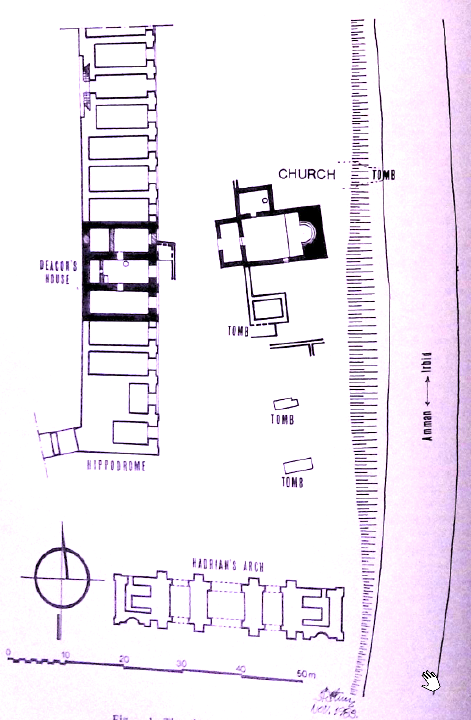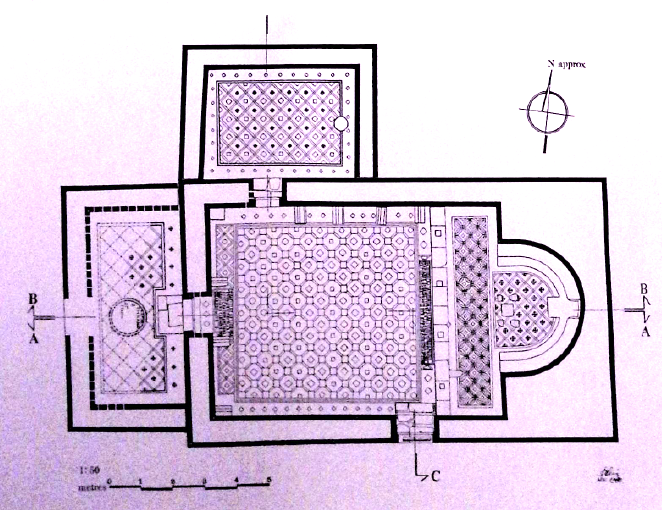Jerash - Bishop Marianos Church
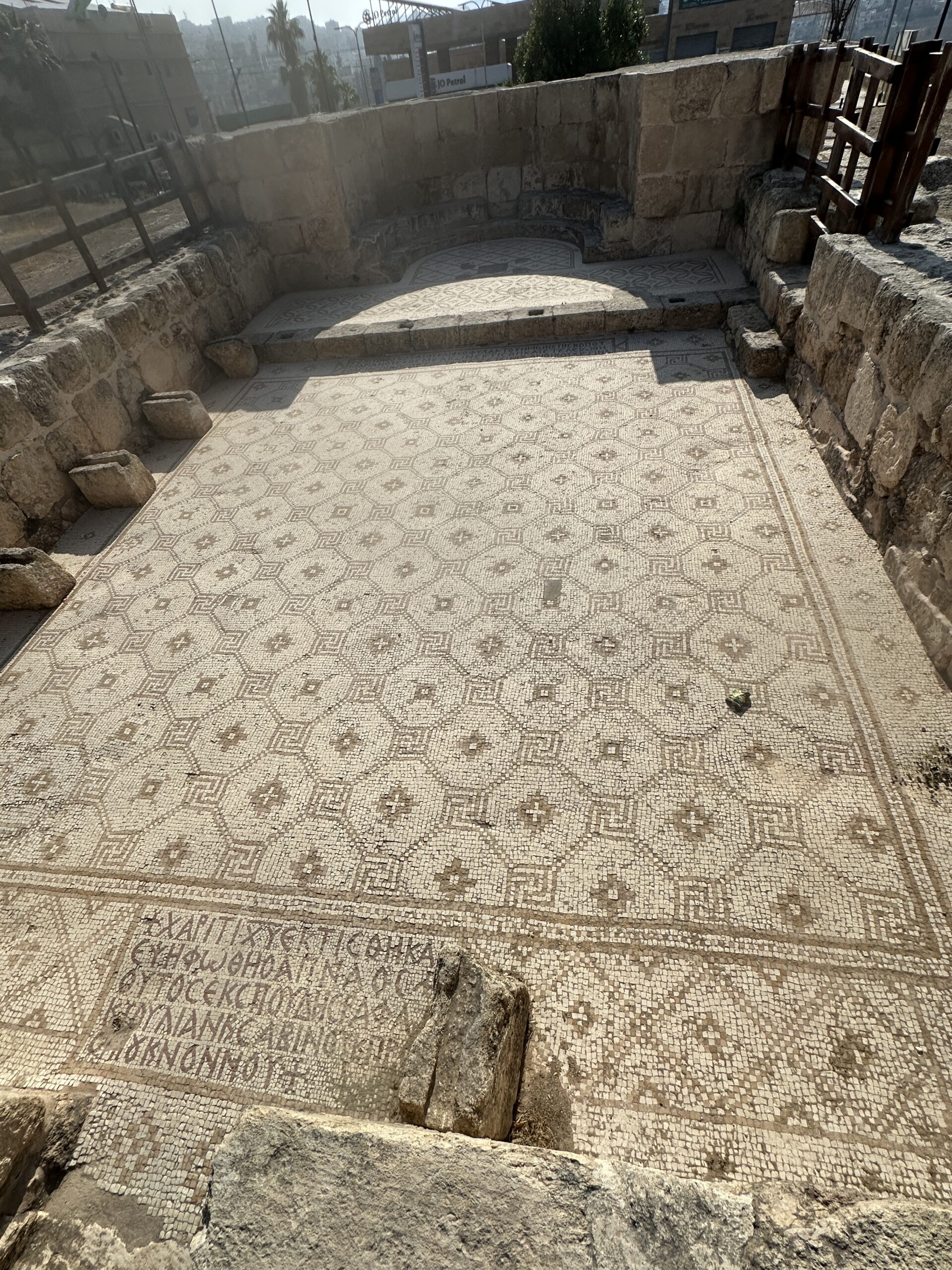 Church of Bishop Marianos
Church of Bishop Marianos
click on image to open in a new tab
Photo by Jefferson Williams - 23 June 2025
ChatGPT Introduction
- from Chat GPT 5.1, 15 November 2025
- sources: Universes in Universe – Jerash, Jerash (Wikipedia)
The church belongs to the flourishing ecclesiastical milieu of late antique Gerasa, when numerous small community churches were established alongside larger basilicas. Its modest scale reflects both the demographic character of the district—likely a quarter of artisans living among and within the abandoned structures of the hippodrome—and the wider trend of decentralised Christian building activity in the sixth century.
Architecturally the church consists of a single nave entered from the west, terminating in an eastern apse with a clerical bench. The interior was enriched with geometric mosaic pavements, including a tabula ansata inscription set before the altar. These features situate the church firmly within the provincial Byzantine tradition of the period while also revealing a local community able to commission skilled mosaic work.
Aerial Views and Plans
Aerial Views
Plans
Site Plans
Normal Size
Area Plans
Church
Normal Size
- Fig. 1 Plan showing
the church and the Deacon's House from Gawlikowski & Musa (1986)
- Fig. 2 Plan showing the church of Bishop Marianos from Gawlikowski & Musa (1986)
Magnified
- Fig. 1 Plan showing
the church and the Deacon's House from Gawlikowski & Musa (1986)
- Fig. 2 Plan showing the church of Bishop Marianos from Gawlikowski & Musa (1986)
Removed Reliquary Earthquake - 8th century CE
Discussion
Gawlikowski & Musa (1986)
... The interior of the church was found filled with stones and tiles marking the destruction that must have been sudden, as can be seen from the small finds discussed later in this report, scattered on the pavement. They prove by the same token that the church remained in use to its end. The reliquary, as well as the chancel screen, the altar and the bishop's throne, were recovered from the rubble shortly after the disaster. The date of this event can be deduced from one particular find: a coin embedded in the chancel pavement in a place where the mosaic was damaged; it could not have found its way there after the abandonment of the church. The coin is a post-reform Umayyad fils, minted between 700–750 A.D.4.
Footnotes
4 Diam. 12 m. A [Arabic text], within dots, R. [Arabic text], within dots.
Boyer in Lichtenberger and Raja (2025)
| Century (AD) | Event (AD) attribution by original author |
Reliability of interpreted evidence |
Likely attributable seismic event (AD) |
Locality | Plan ref. | Reference |
|---|---|---|---|---|---|---|
| 8th | Medium | 747–749 | Bishop Marianos Church | 15 | Gawlikowski and Musa 1986, 141. |
Removed Reliquary Earthquake - 8th century CE
| Seismic Effect | Location | Image(s) | Description |
|---|---|---|---|
|
Isaiah Church
 Plan of Jerash. North is to the right.
Plan of Jerash. North is to the right.
Click on image to open in a new tab Holger Behr - Wikipedia - Public Domain |
|
Removed Reliquary Earthquake - 8th century CE
- Earthquake Archeological Effects chart
of Rodríguez-Pascua et al (2013: 221-224)
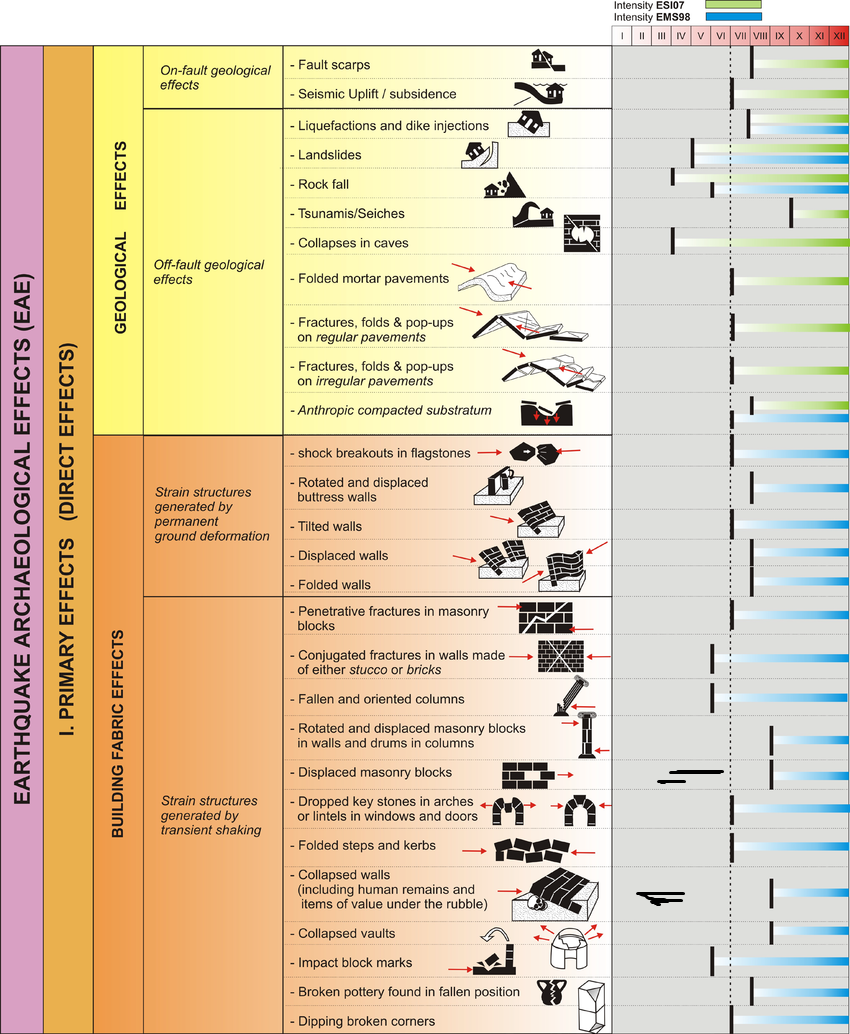
 Earthquake Archeological Effects (EAE)
Earthquake Archeological Effects (EAE)
Rodríguez-Pascua et al (2013: 221-224)
| Seismic Effect | Location | Image(s) | Description | Intensity |
|---|---|---|---|---|
|
Isaiah Church
 Plan of Jerash. North is to the right.
Plan of Jerash. North is to the right.
Click on image to open in a new tab Holger Behr - Wikipedia - Public Domain |
|
|
References
Articles and Books
Gawlikowski, M., & Musa, A. (1986). The Church of Bishop Marianos
. In F. Zayadine (Ed.), Jerash Archaeological Project, 1: 1981-1983 (pp. 137-162). Amman: Department of Antiquities.
- open access at archive.org
Lichtenberger, A. and Raja, R. (ed.s) (2025) Jerash, the Decapolis, and the Earthquake of AD 749 The Fallout of a Disaster
Belgium: Brepols.
Earthquake Damage in Jerash between the 1st and 19th centuries CE
Map
- from Lichtenberger and Raja (2025)
- Table 2.2 List of seismic damage
in Jerash between the 1st and 19th centuries CE from Lichtenberger and Raja (2025)
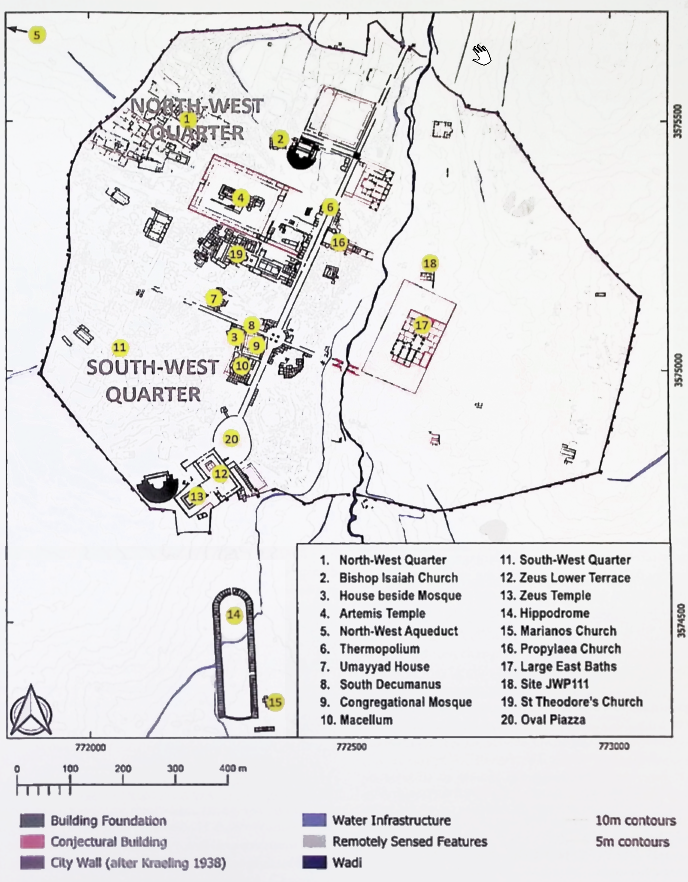 Figure 2.6
Figure 2.6Plan of ancient Gerasa showing the location of earthquake-damaged sites referred to in Table 2.2
(after Lichtenberger, Raja, and Stott 2019.fig.2)
Click on Image to open in a new tab
Lichtenberger and Raja (2025)
Table
- from Lichtenberger and Raja (2025)
- Fig. 2.6 Map of seismic damage
in Jerash between the 1st and 19th centuries CE from Lichtenberger and Raja (2025)
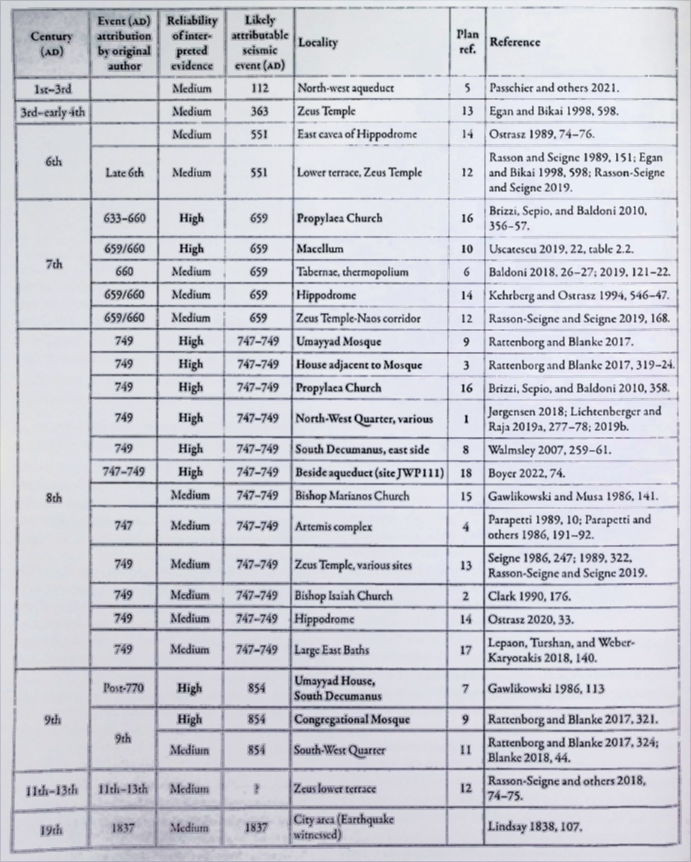 Table 2.2
Table 2.2List of seismically induced damage recorded in Gerasa where the relaibility of the evidence is considered to be medium or high
Click on Image to open in a new tab
Lichtenberger and Raja (2025)

